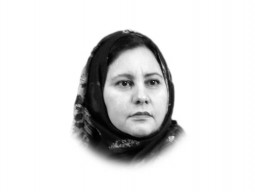
The recent reconciliation overtures by the state and the government of Pakistan should be viewed through the available models of the militant pacification. For this purpose, one needs to look at the militant ideological perspectives such as a social movement, a religious cause or an ethic manifesto leading to some territorial gains.
An evaluation of these ideological settings may explain further the nature, structure and strength of a militancy in a particular region. The Baloch militants and Tehreek-e-Taliban Pakistan (TTP) belong to different ideological strands with unidentical historical evolution. The former has been in an advanced phase of its militancy whereby it has established diverse tentacles overarching its monolithic socio-cultural narrative.
It has extended its outreach and trans-provincial accessibility through a synergy of operational mechanism with groups having different ideological aims and objectives. The TTP, on the other hand, is a conglomerate of militant groups having diverse field elements which was formally established in 2007. There are three ideological pillars of its strategy namely staging war against the US and the allied forces in Afghanistan, attacking the US collaborators and abettors in Pakistan, and working for imposition of Sharia in the country.
With the US withdrawal from Afghanistan, the TTP has recalibrated its strategy towards Pakistan. The nature of their bonding with Afghan Taliban has also complicated the matters for law enforcement agencies. The reconciliation with Baloch militants and TTP should therefore involve different strategies. There must be divergent methods behind these reconciliation postures. Keeping the legal perspectives apart, let us navigate through the available models of such reconciliation. The recent capitulation of Boko Haram militants has gained international media attention when nearly 7,000 of its followers along with their family members and captives surrendered before the state authorities in Nigeria.
They laid down their arms after the death of their leader, Abubakar Shekau, in a decapitation operation. The group has been weakened considerably and the vacuum is likely to be filled in by its rival groups such as Islamic State West Africa Province (ISWAP). There is also likelihood of emergence of new splinter groups or alliances between the old militants to attract the disillusioned foot soldiers of Boko Haram. The one available model is to target the leadership of Baloch militants or groups in rejectionist mode under TTP fold to cause considerable defections.
The latter should be taken into state ownership as quickly as possible with a social integration programme. However, it is fraught with a range of possible dangers including re-emergence of splinter groups or formation of new alliances especially with like-minded groups like Islamic State Khorasan Province (ISKP) which has a lot of overlapping ideological strands with elements of TTP. This approach may reduce the strength of TTP but its structure can survive with passage of time and ISKP may move in to fill the vacuum. Hence, such a model is a long term one in which militancy reduces slowly with periods of intermittent militant activity.
However, a permanent settlement may require a regional approach against the militancy. The other model is based on reconciliation with legality. In 2016, a peace deal was maintained between the Columbian government and the Revolutionary Armed Forces of Columbia (FARC) which was hailed as a major breakthrough to end the 50-year-long militancy in the country. A parliamentary oversight was ensured during the peace process after a referendum failed to secure the desired 50 per cent of votes.
The peace deal resulted in demobilisation of 13,000 FARC fighters along with stability in many parts with implementation of transition justice system in which victims occupied the centre stage. However, a dissident group of FARC known as Marxist National Liberation Army (ELN) is still operating with approximately 3,000 fighters and is vying to control mineral-rich area and profitable coca fields in the country. Though the situation has improved considerably in Columbia, the actual peace may take longer to achieve stability as a set of social and political reforms are yet to be implemented in the country.
The reconciliation with Baloch militants and TTP has to be addressed differently but it should be a move initiated with proper legal oversight in which victims or their families must be under constant spotlight. Moreover, a guarantor, acceptable to both sides, is an essential pre-requisite otherwise any conciliatory gesture may be as fragile as the peace endeavors in the past.

1736506105-0/Untitled-design-(26)1736506105-0-405x300.webp)
1736504232-0/tom-(2)1736504232-0-165x106.webp)
1736502202-0/fizza-(3)1736502202-0-165x106.webp)

1736498370-0/Untitled-design-(25)1736498370-0-165x106.webp)







1736332856-0/Untitled-design-(20)1736332856-0-270x192.webp)



1736334465-0/sidra--(45)1736334465-0-270x192.webp)


COMMENTS
Comments are moderated and generally will be posted if they are on-topic and not abusive.
For more information, please see our Comments FAQ